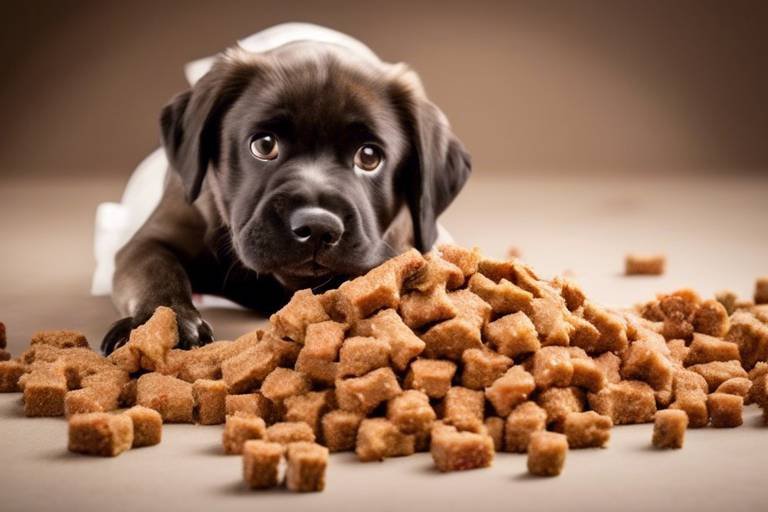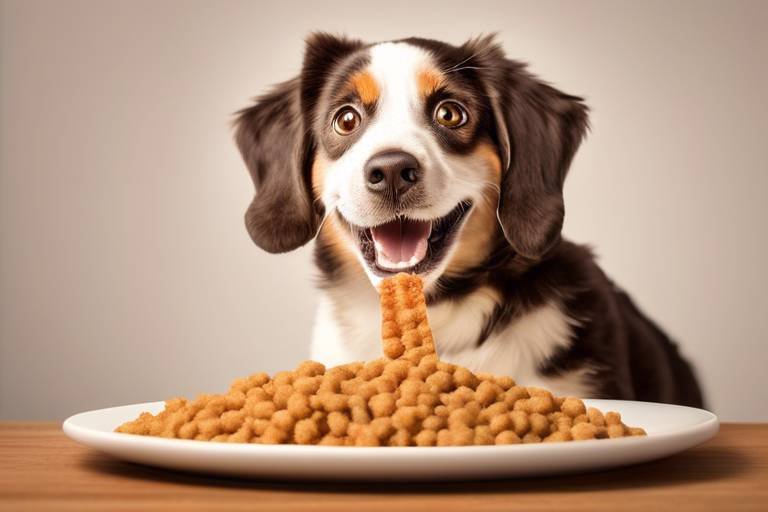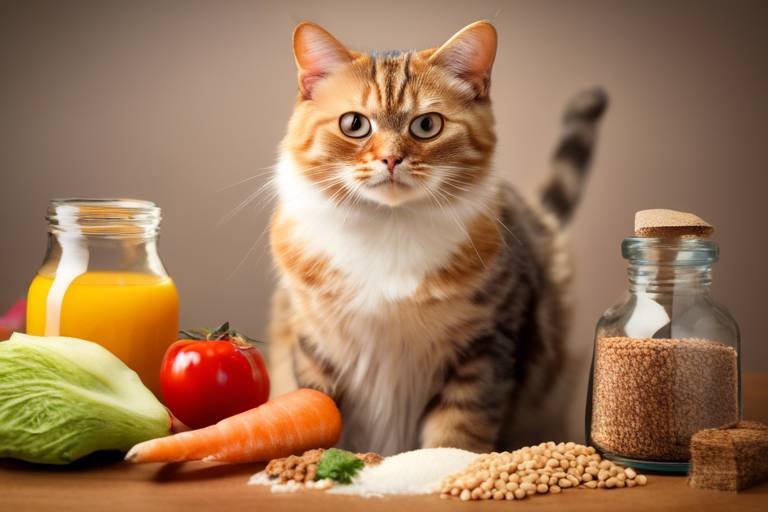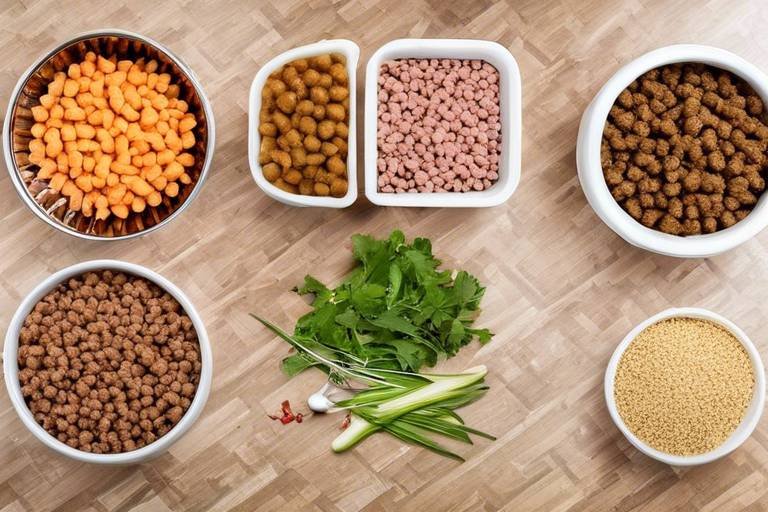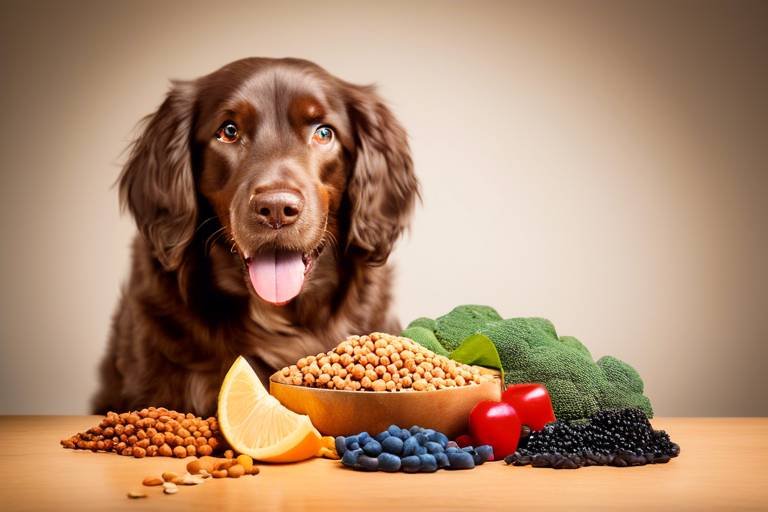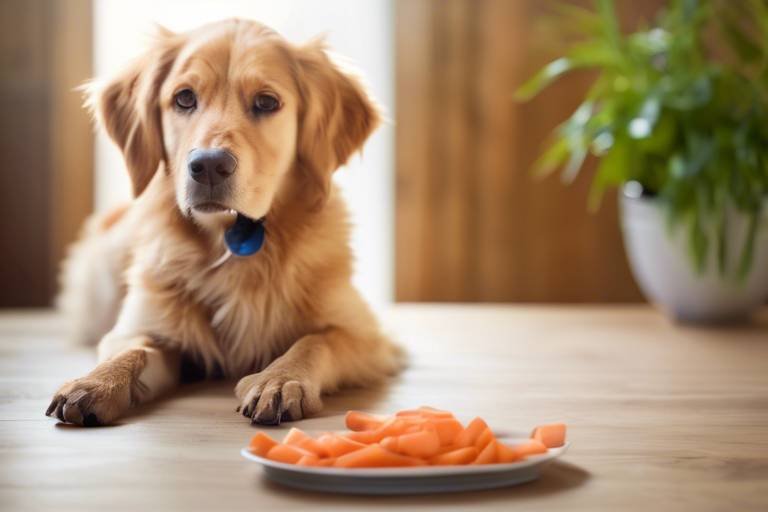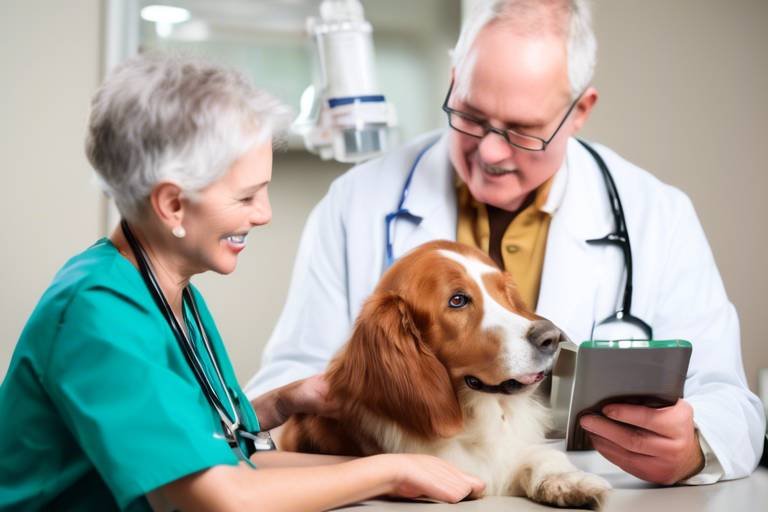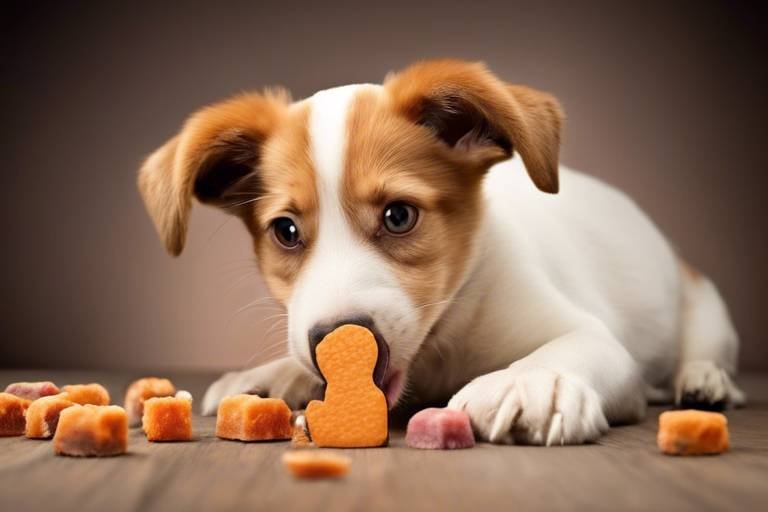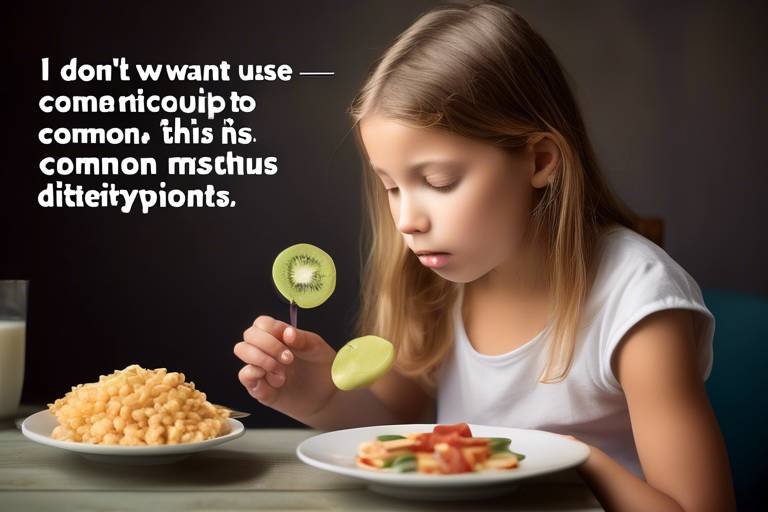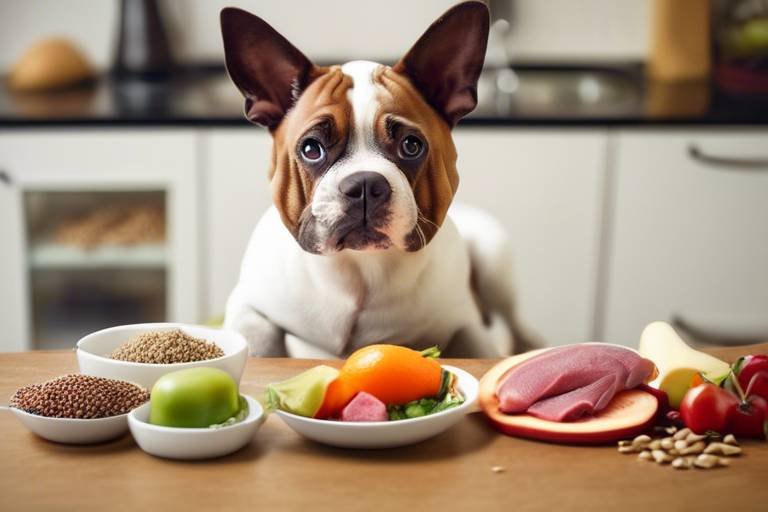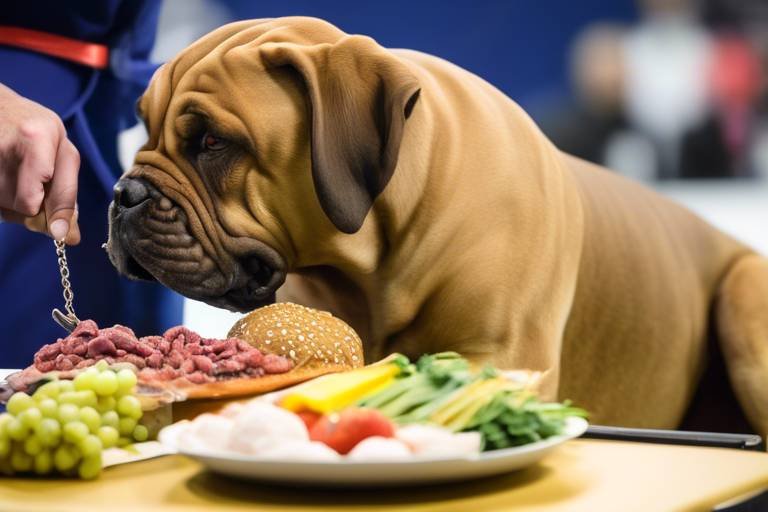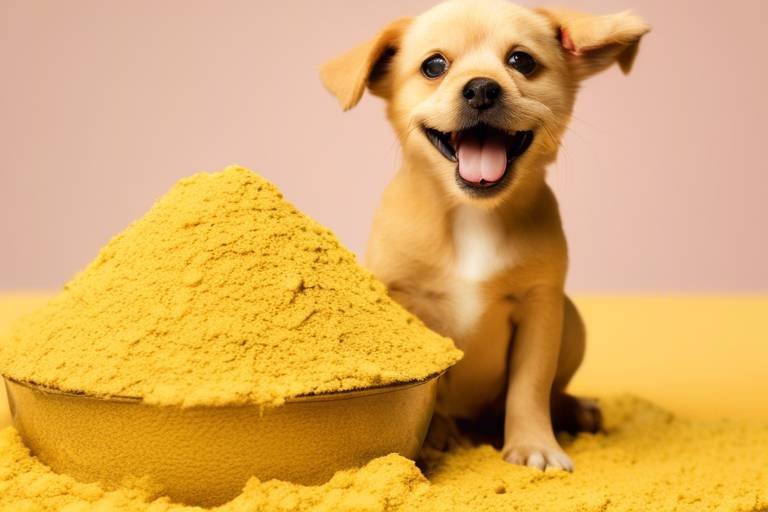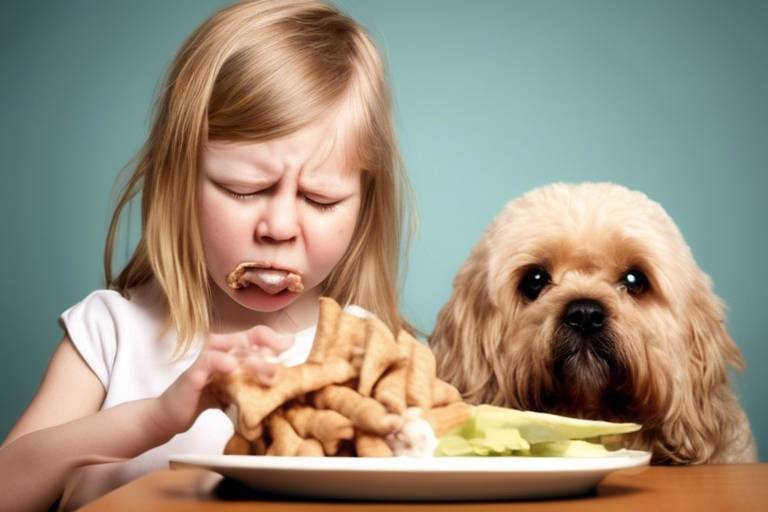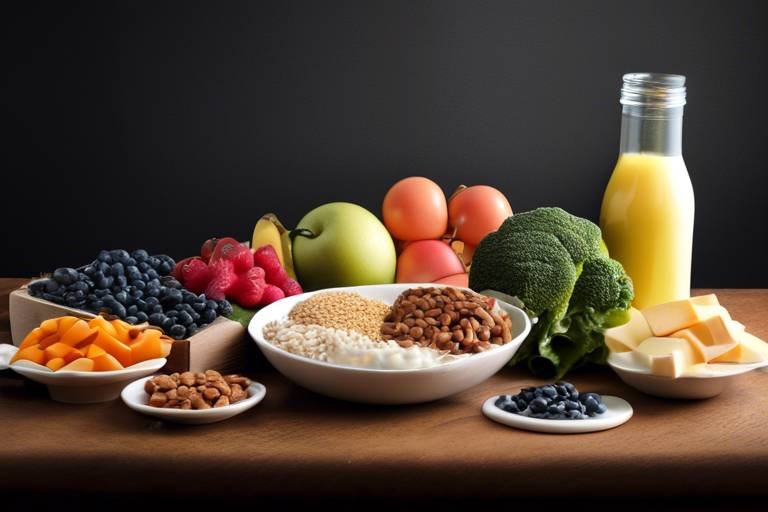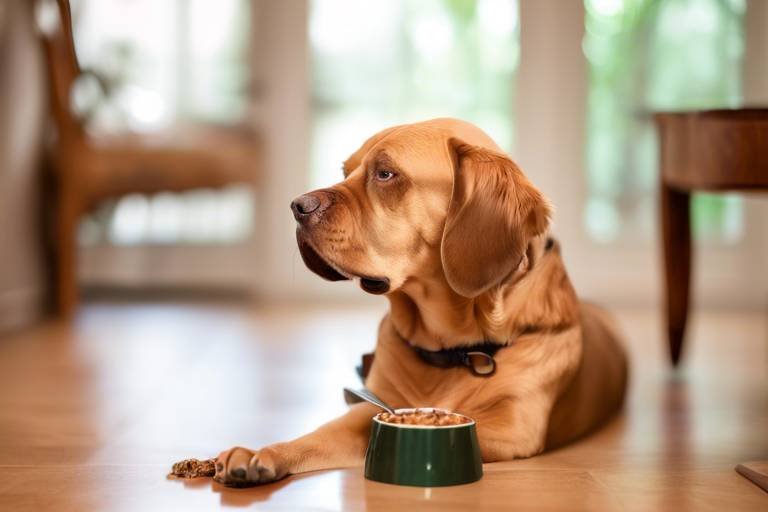Understanding the Risks of Homemade Pet Food
As pet owners, we often want the best for our furry friends, and the idea of preparing homemade pet food may seem like a noble pursuit. After all, who wouldn’t want to serve their pets fresh, wholesome meals? However, diving into the world of homemade pet food comes with its own set of challenges and risks that many owners may not fully understand. The truth is, while cooking for your pet can offer some benefits, it can also lead to serious health issues if not done correctly. From nutritional imbalances to contamination risks, the dangers are real.
First and foremost, let's talk about nutritional balance. Many pet owners assume that by cooking at home, they are automatically providing a better diet. However, formulating a balanced diet for pets is far more complex than it appears. Pets have specific dietary needs, and failing to meet these can lead to deficiencies or excesses of vital nutrients. For example, a diet lacking in calcium can lead to bone problems, while an excess of certain vitamins can be toxic. Understanding these nutritional requirements is paramount for maintaining your pet's health.
Moreover, the risk of contamination cannot be overlooked. Homemade pet food can harbor harmful bacteria and toxins if not prepared or stored properly. Improper handling can introduce pathogens like Salmonella or E. coli, which can be detrimental not only to your pet but also to your family. It’s essential to be aware of safe food handling practices, such as cooking meat thoroughly and ensuring that all utensils and surfaces are clean. By adhering to these practices, you can significantly reduce the risk of contamination.
Many pet owners struggle to provide balanced nutrition in homemade diets, leading to deficiencies or excesses in essential nutrients. Understanding these risks is crucial for maintaining your pet's health.
Homemade pet food can harbor bacteria and toxins if not prepared or stored properly. Awareness of these contamination risks is vital for ensuring your pet's safety.
Certain human foods, like chocolate and onions, are toxic to pets. Identifying and avoiding these harmful ingredients in homemade recipes is essential for your pet's well-being.
Raw diets are increasingly popular but come with risks like bacterial infections. Understanding these concerns helps pet owners make informed decisions about their pet's diet.
Adopting safe food handling practices, such as proper cooking and storage, can significantly reduce contamination risks in homemade pet food.
Veterinarians can provide valuable guidance on formulating a balanced homemade diet. Regular consultations ensure that your pet receives adequate nutrition tailored to their specific needs.
Homemade pet food is not subject to the same regulations as commercial products, raising concerns about safety and quality. Understanding these legal implications is important for responsible pet ownership.
Commercial pet food must adhere to labeling standards, providing transparency about ingredients. Homemade diets lack this oversight, making it essential for pet owners to be vigilant about ingredient quality.
Feeding pets homemade diets without proper knowledge can lead to long-term health issues. Recognizing potential health risks can help owners make better dietary choices for their pets.
Here are some common questions pet owners may have about homemade pet food:
- Can I feed my pet a completely homemade diet? Yes, but it requires careful planning and consultation with a veterinarian to ensure nutritional adequacy.
- What are the signs of nutritional deficiency in pets? Signs include lethargy, poor coat condition, and digestive issues. If you notice these, consult your vet immediately.
- Is it safe to use raw ingredients in homemade pet food? Raw diets can pose risks of bacterial infections. Always consult with a veterinarian before deciding on this type of diet.
- How can I ensure the safety of homemade pet food? Follow safe food handling practices, store food properly, and regularly consult with a veterinarian.
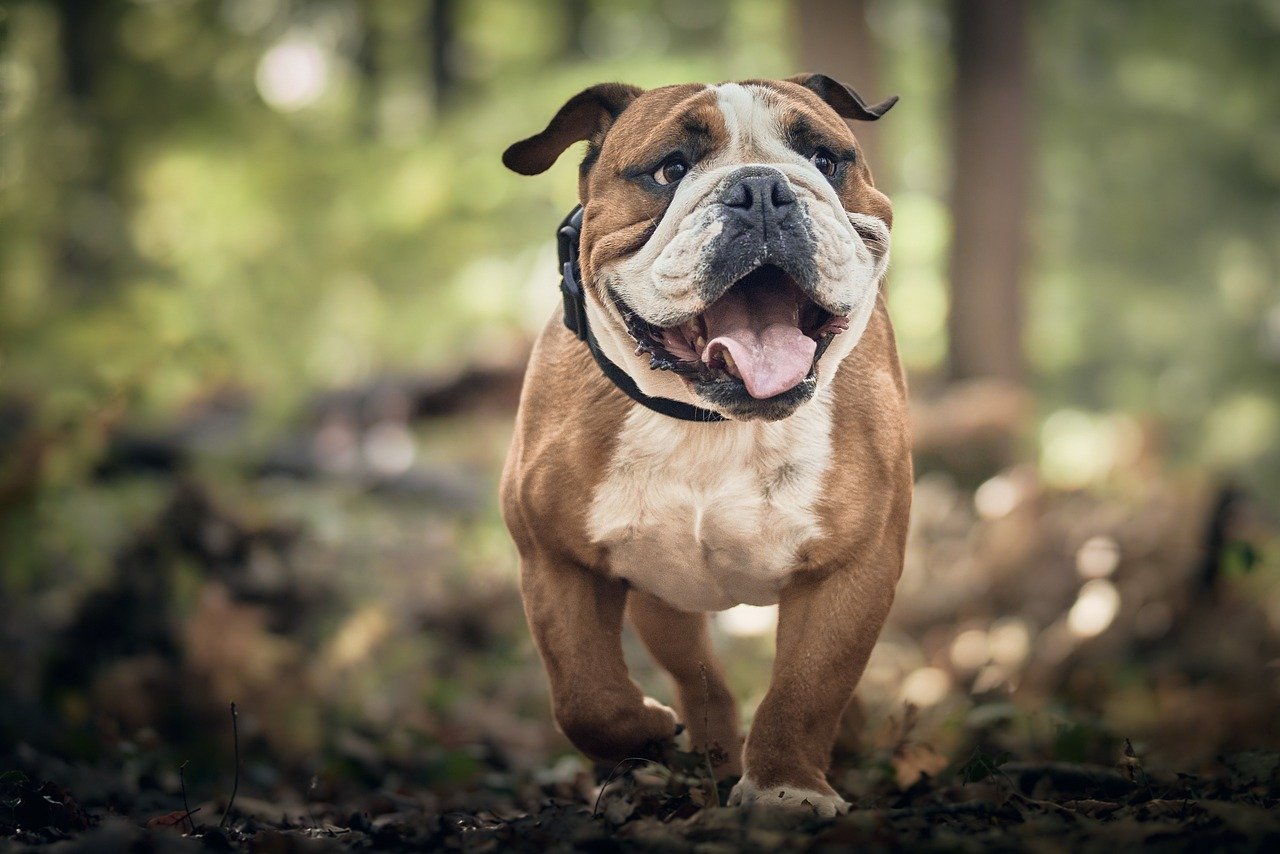
The Nutritional Imbalance Dilemma
Many pet owners embark on the journey of creating homemade pet food with the best intentions, believing they are providing their furry friends with a healthier alternative to commercial diets. However, the nutritional imbalance dilemma is a significant concern that can arise from this well-meaning endeavor. It's crucial to understand that achieving a well-balanced diet for pets is not as straightforward as it may seem. Unlike commercial pet foods, which are formulated by nutritionists and adhere to specific guidelines, homemade diets can easily lead to deficiencies or excesses in essential nutrients.
Consider this: just like humans, pets require a delicate balance of proteins, carbohydrates, fats, vitamins, and minerals to thrive. A diet lacking in any of these components can result in serious health issues. For example, too little calcium can lead to bone problems, while excess protein may strain the kidneys. This is why it’s vital to have a solid understanding of what constitutes a balanced diet for your pet.
To illustrate the potential pitfalls, let's look at a few common mistakes pet owners make:
- Excessive Treats: Many owners think that adding a variety of treats will enhance their pet's diet, but too many can lead to obesity and other health issues.
- Overlooking Nutritional Needs: Each pet has unique dietary requirements based on their age, breed, and health status. A one-size-fits-all approach can be detrimental.
- Ignoring Veterinary Advice: Skipping consultations with a veterinarian can lead to unintentional nutrient imbalances.
Additionally, it's essential to recognize that some nutrients work synergistically. For instance, calcium and phosphorus need to be in the right ratio for optimal absorption. A lack of understanding about these interactions can lead to serious health consequences for your pet. Therefore, if you're considering homemade diets, consulting with a veterinarian or a pet nutritionist is not just advisable—it's essential.
In conclusion, while the idea of preparing homemade pet food can be appealing, the nutritional imbalance dilemma highlights the importance of knowledge and understanding in this process. Your pet's health is too precious to leave to chance. By being informed and seeking professional guidance, you can create a diet that truly supports your furry friend’s well-being.
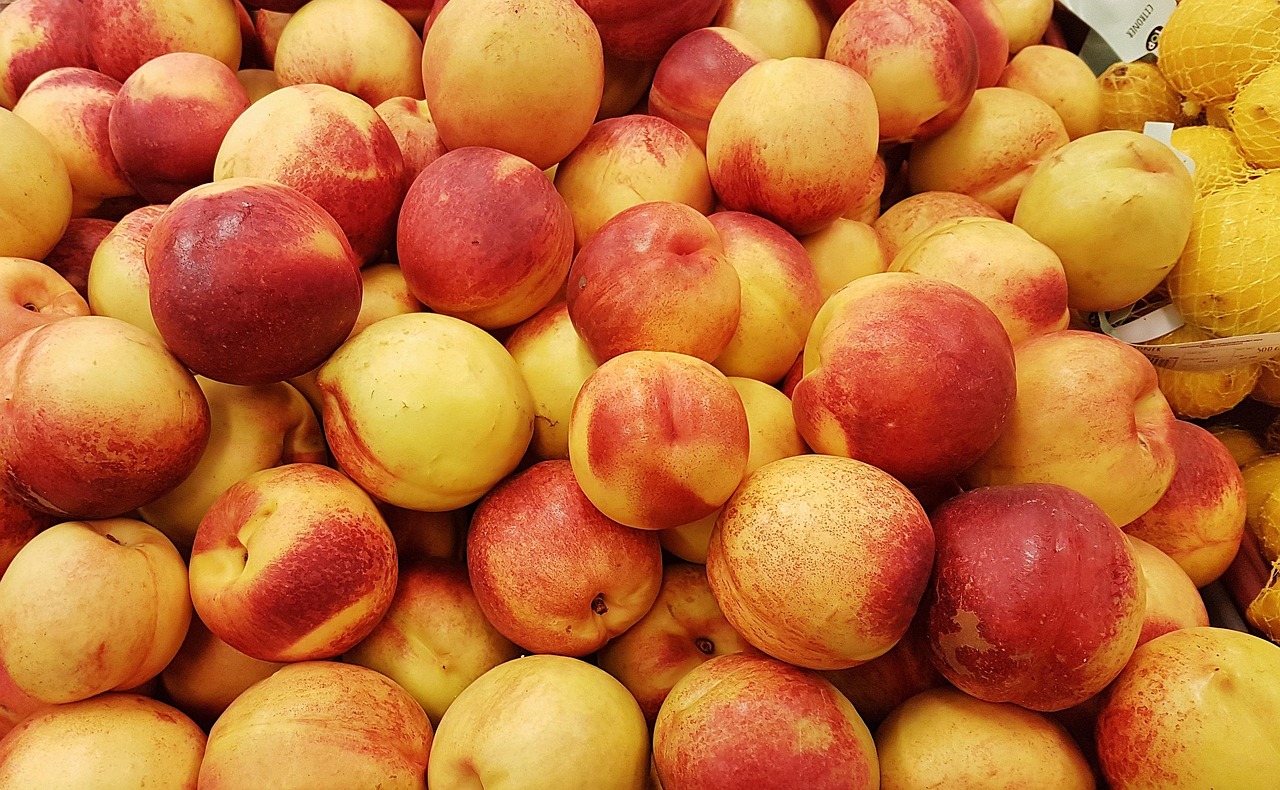
Contamination Risks in Homemade Recipes
When it comes to feeding our furry friends, the idea of homemade pet food can feel like a warm hug—after all, what could be better than knowing exactly what goes into their meals? However, this well-meaning approach can also open the door to a world of potential contamination risks that many pet owners might not consider. Just like cooking for ourselves, there are safety protocols that need to be followed to ensure our pets stay healthy and happy.
One of the primary concerns with homemade pet food is the risk of bacterial contamination. Ingredients that are raw or improperly handled can harbor harmful bacteria such as Salmonella or E. coli. Imagine preparing a delicious chicken dinner for your pet, only to unknowingly introduce these nasty bugs into their food. These bacteria can not only affect your pet but can also pose a risk to you and your family, especially if proper hygiene practices aren't followed.
Another aspect to consider is cross-contamination. If you're using the same cutting boards and utensils for both human and pet food, you’re playing a risky game. For instance, if you chopped vegetables for your pet on a board that previously held raw meat, those dangerous pathogens could easily transfer. It's crucial to maintain separate utensils and surfaces for preparing your pet’s meals to minimize this risk.
Furthermore, the storage of homemade pet food is just as important as its preparation. Improper storage can lead to the growth of mold or bacteria, which can be detrimental to your pet's health. It's essential to store homemade meals in airtight containers and keep them in the refrigerator or freezer to maintain their freshness. Here are some key points to remember:
- Always refrigerate or freeze leftovers within two hours of cooking.
- Thaw frozen food in the refrigerator, not at room temperature.
- Use airtight containers to prevent contamination from other foods.
Lastly, let’s not forget about the ingredients themselves. Certain human foods are toxic to pets. For instance, foods like chocolate, grapes, and onions can lead to severe health issues if ingested. If you're crafting a homemade meal, it's imperative to research and ensure that all ingredients are safe for your furry companion. Keeping a list of common toxic foods handy can be a lifesaver:
| Food | Toxicity Level |
|---|---|
| Chocolate | High |
| Onions | High |
| Grapes | High |
| Xylitol (artificial sweetener) | High |
In summary, while homemade pet food can be a great way to ensure your pet is eating high-quality meals, it's essential to be aware of the contamination risks involved. By following safe food handling practices, being conscious of ingredient safety, and maintaining proper storage methods, you can help protect your pet from potential health issues. Remember, a little awareness goes a long way in keeping your furry friend safe and sound.
Q: Can homemade pet food lead to serious health issues?
A: Yes, if not prepared or stored properly, homemade pet food can lead to bacterial infections or nutritional imbalances, both of which can have serious health consequences for your pet.
Q: What are the signs of food contamination in pets?
A: Symptoms can include vomiting, diarrhea, lethargy, and loss of appetite. If you notice any of these signs after feeding your pet homemade food, consult a veterinarian immediately.
Q: Is it safe to use raw ingredients in homemade pet food?
A: Using raw ingredients can increase the risk of bacterial contamination. If you choose to use raw foods, ensure that you follow strict hygiene and handling practices.
Q: How can I ensure my homemade pet food is nutritionally balanced?
A: Consulting with a veterinarian or a pet nutritionist can provide you with valuable insights on how to formulate a balanced diet for your pet, ensuring they receive all the necessary nutrients.
Common Ingredients to Avoid
When it comes to preparing homemade pet food, it's crucial to be aware of certain ingredients that can pose serious health risks to your furry friends. Just like how some foods are harmful to humans, pets also have their own list of no-nos. For instance, chocolate is a well-known toxic treat for dogs and cats alike. It contains theobromine, which can lead to symptoms ranging from vomiting to severe heart issues. Similarly, onions and garlic can cause damage to a pet's red blood cells, leading to anemia. Even small amounts can be harmful, so it's best to steer clear of these ingredients entirely.
Another common ingredient that might seem innocuous is grapes and raisins. While they are healthy snacks for humans, they can cause kidney failure in dogs. This is one of those cases where what’s good for us can be downright dangerous for our pets. It's essential to remember that pets metabolize foods differently, and what works for us may not work for them.
Additionally, you might want to avoid using avocado in your pet's meals. While it's a superfood for humans, it contains a substance called persin, which can be toxic to some animals, particularly birds and large animals like horses. Even though dogs and cats are less sensitive to persin, it’s better to play it safe and keep avocado out of their diets.
Here’s a quick overview of other common ingredients to avoid:
- Alcohol - Even small amounts can be toxic to pets, leading to severe health issues.
- Caffeine - Found in coffee, tea, and some sodas, caffeine can cause restlessness, rapid breathing, and heart palpitations.
- Nuts - Certain nuts, like macadamia nuts, can lead to weakness, depression, and tremors in dogs.
Understanding which ingredients to avoid is just the first step. It's equally important to ensure that your homemade pet food is balanced and nutritious. Consulting with your veterinarian can help you create a meal plan that meets your pet's specific dietary needs, ensuring that they get the right nutrients without the risk of harmful ingredients.
Q: Can I use leftovers from my dinner to feed my pet?
A: It's not advisable, as many human foods contain ingredients that can be harmful to pets. Always check if the leftovers are safe for them.
Q: Are there any safe human foods I can include in my pet's diet?
A: Yes! Foods like cooked chicken, carrots, and plain rice can be safe for pets. However, always consult your vet to ensure these foods are suitable for your specific pet.
Q: How can I ensure my homemade pet food is balanced?
A: The best way is to consult with a veterinarian or a pet nutritionist who can guide you in creating a balanced diet tailored to your pet's needs.
Raw Diet Concerns
The trend of feeding pets a raw diet has gained significant traction among pet owners who believe it closely mimics the natural eating habits of their furry companions. However, this approach is not without its concerns. One of the primary issues associated with raw diets is the risk of bacterial infections. Ingredients such as raw meat, poultry, and fish can harbor harmful bacteria like Salmonella and E. coli, which can pose serious health risks not only to pets but also to humans who handle the food. Imagine preparing a delicious meal for your pet, only to find out later that it could have made both of you sick!
Moreover, raw diets often lack the essential nutrients that are crucial for your pet's health. While some pet owners may think they are providing a balanced meal, without proper research and understanding, they might inadvertently create a diet that is deficient in vital vitamins and minerals. For instance, a lack of calcium can lead to bone issues, while insufficient protein can affect your pet's muscle health. It's like trying to build a house without a solid foundation—eventually, it will crumble!
Another concern with raw diets is the handling and storage of ingredients. Improper storage can lead to spoilage, and if raw food is not handled correctly, it can easily become contaminated. Pet owners must ensure they are following safe food handling practices, such as keeping raw ingredients separate from other foods, washing hands and surfaces thoroughly, and storing food at the right temperatures. Just like you wouldn’t want to eat spoiled food, your pet deserves the same care!
In addition to these risks, there’s also the question of cost and convenience. Preparing a raw diet can be time-consuming and may require sourcing high-quality ingredients, which can be more expensive than commercial pet food. For busy pet owners, this might not be a sustainable option in the long run. It's essential to weigh the benefits against the potential risks and challenges.
Ultimately, if you're considering a raw diet for your pet, it's crucial to consult with a veterinarian who can guide you in formulating a balanced diet that meets your pet's specific nutritional needs. They can help you navigate the complexities of raw feeding and ensure that your pet stays healthy and happy.
- What are the main risks of feeding my pet a raw diet?
Raw diets can expose pets to harmful bacteria and may lead to nutritional deficiencies if not properly balanced. - Can I switch my pet to a raw diet safely?
Yes, but it's important to consult with a veterinarian to ensure a balanced and safe transition. - How can I safely handle raw pet food?
Always wash your hands and surfaces after handling raw food, store it at the correct temperatures, and keep it separate from other foods. - Are there any alternatives to raw diets?
Yes, high-quality commercial pet foods are formulated to meet all the nutritional needs of pets without the risks associated with raw diets.
Safe Food Handling Practices
When it comes to preparing homemade pet food, are absolutely crucial. Just like you wouldn’t want to serve your family undercooked chicken or spoiled vegetables, the same principle applies to your furry friends. Ensuring that the food you prepare is safe can help prevent a host of health issues that could arise from contamination. Here are some essential practices to keep in mind:
First and foremost, always start with clean hands and a clean workspace. Wash your hands thoroughly with soap and water before you begin preparing any food. This simple step can significantly reduce the risk of transferring harmful bacteria to your pet's meals. Additionally, make sure to sanitize all surfaces, utensils, and equipment that will come into contact with the food. Think of your kitchen as a sterile environment, much like a laboratory where precision and cleanliness are key.
Next, consider the ingredients you’re using. Always opt for fresh, high-quality ingredients. Check expiration dates and avoid any items that look or smell off. It’s also wise to store ingredients properly—keep meats in the refrigerator or freezer until you’re ready to use them, and ensure that produce is washed thoroughly before it’s chopped or blended. Remember, just because something looks good on the outside doesn’t mean it’s safe on the inside!
Cooking food to the right temperature is another vital aspect of safe food handling. For example, meats should be cooked to a safe internal temperature to kill harmful bacteria. You might be surprised to learn that some meats, like chicken, should reach at least 165°F (74°C) to be considered safe. Using a food thermometer can help you avoid any guesswork and ensure that your pet’s meals are not only tasty but also safe.
Storage is equally important. After preparing homemade pet food, it’s essential to store it correctly. If you’re not serving the food immediately, divide it into small portions and store them in airtight containers in the refrigerator. Homemade pet food can typically be stored for about 3-5 days in the fridge. If you want to keep it longer, consider freezing it. Just remember to thaw it safely in the refrigerator before serving!
Lastly, always be cautious about cross-contamination. Just as you wouldn’t want to mix raw chicken with your salad ingredients, the same goes for your pet's food. Use separate cutting boards and utensils for raw meats and other ingredients. This practice will help prevent any harmful bacteria from spreading and keep your pet safe.
In summary, safe food handling practices are not just a suggestion; they are a necessity for anyone looking to prepare homemade meals for their pets. A little diligence in the kitchen can go a long way in ensuring that your beloved companion stays healthy and happy.
- What are the signs of food contamination in pet food? Look for unusual smells, discoloration, or mold. If in doubt, throw it out!
- Can I use leftovers from my meals in my pet's food? While some leftovers can be safe, always check for ingredients that are toxic to pets, like onions or garlic.
- How can I ensure my homemade pet food is nutritionally balanced? Consult with a veterinarian or a pet nutritionist to tailor recipes that meet your pet's specific dietary needs.
Consulting with Veterinarians
When it comes to your furry friend's diet, is not just a good idea; it's essential. These professionals are like the GPS for your pet’s nutritional journey, guiding you through the maze of dietary choices. Many pet owners might think they can whip up a homemade meal without any professional input, but this can lead to a myriad of issues. Just like we wouldn’t want to navigate a complex recipe without a chef’s advice, our pets deserve the same level of care.
Veterinarians can provide tailored advice based on your pet's specific needs, age, breed, and health conditions. For instance, a puppy has different nutritional requirements than a senior dog. A vet can help you formulate a balanced homemade diet that includes the right proportions of proteins, carbohydrates, fats, vitamins, and minerals. This knowledge is vital as it ensures that your pet is not missing out on essential nutrients or consuming harmful ingredients.
Additionally, regular consultations with your vet can help in monitoring your pet's health and adjusting their diet as needed. Just as we regularly check our own health and make dietary adjustments, our pets require the same attention. A vet can identify any signs of nutritional deficiencies or excesses early on, preventing potential health problems down the line.
Moreover, some pet owners may be tempted to follow popular trends such as raw or grain-free diets without fully understanding the implications. Here, a veterinarian’s expertise becomes invaluable. They can clarify the potential risks associated with these diets, helping you make informed choices. Remember, what works for one pet may not be suitable for another, and a one-size-fits-all approach to pet nutrition is a recipe for disaster.
In conclusion, never underestimate the importance of professional advice when it comes to your pet’s diet. By consulting with a veterinarian, you not only ensure that your pet receives a balanced diet but also contribute to their overall well-being. So, before you start mixing ingredients in your kitchen, pick up the phone and schedule a visit to your vet. Your pet will thank you for it!
- How often should I consult my veterinarian about my pet's diet? It's best to consult your veterinarian at least once a year, or more frequently if you notice any changes in your pet's health or behavior.
- Can I trust online recipes for homemade pet food? While some recipes may be safe, it's crucial to have them reviewed by a veterinarian to ensure they meet your pet's specific nutritional needs.
- What should I do if my pet has food allergies? Consult your veterinarian for a proper diagnosis and dietary recommendations tailored to your pet's allergies.
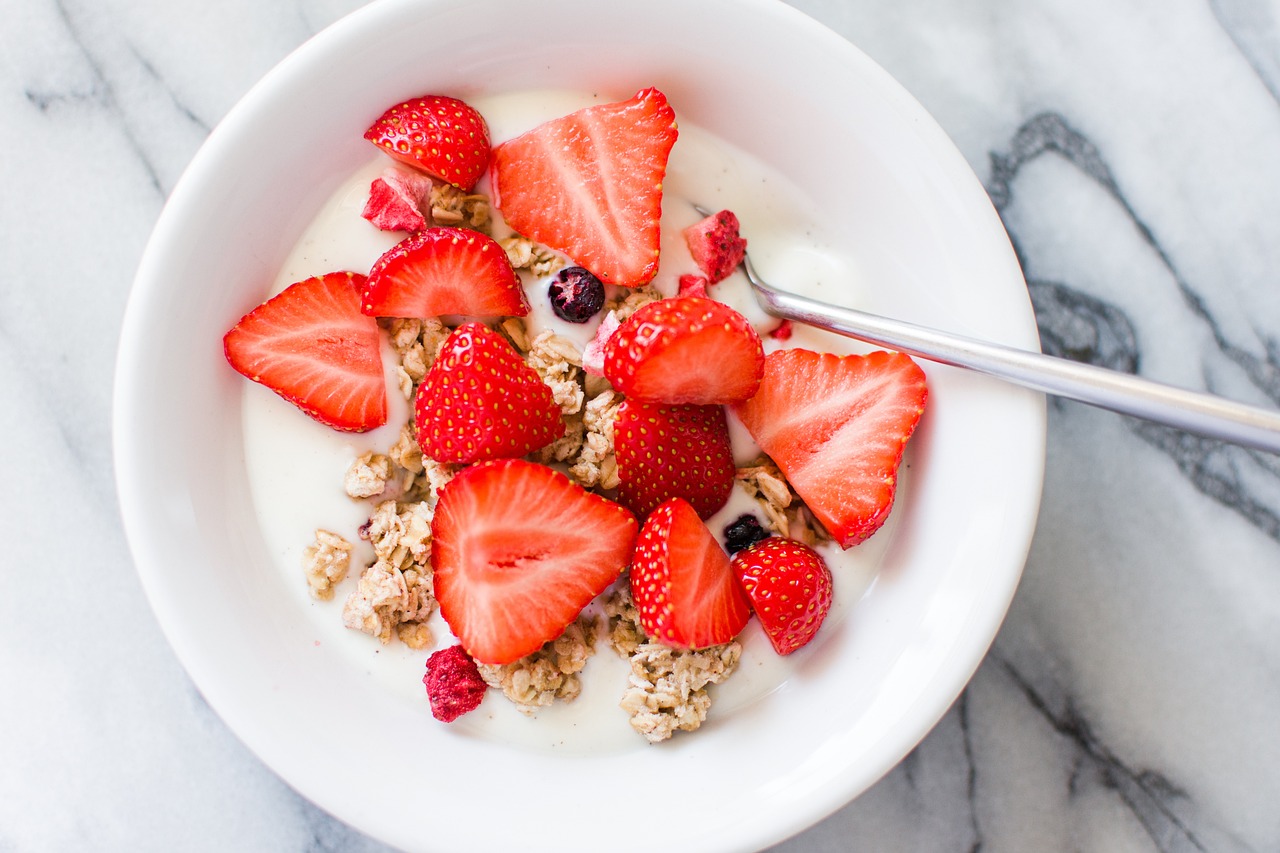
Legal and Regulatory Considerations
When it comes to homemade pet food, are often overlooked by pet owners eager to provide their furry friends with the best diet possible. Unlike commercial pet foods, which are strictly regulated by organizations like the Food and Drug Administration (FDA) and the Association of American Feed Control Officials (AAFCO), homemade pet food does not have to meet the same stringent standards. This lack of oversight raises several important concerns regarding the safety and quality of the food you prepare at home.
One of the primary issues is that homemade pet food lacks the required nutritional adequacy statements that commercial products must include. These statements inform pet owners that the food meets the nutritional levels established by the AAFCO. Without this assurance, pet owners may unknowingly create diets that are either deficient or excessive in essential nutrients, which can lead to serious health problems for their pets.
Furthermore, the absence of labeling regulations means that pet owners have to be extra vigilant about the ingredients they use. Commercial pet foods are required to list all ingredients and provide information about their source and nutritional content. In contrast, homemade diets do not come with this level of transparency, making it crucial for pet owners to research and understand every component they include in their pet's meals.
Additionally, there are liability issues to consider. If a pet becomes ill due to a homemade diet, pet owners might face challenges in proving that the food was prepared safely and contained appropriate ingredients. This could lead to potential legal ramifications, especially if the pet owner shares their recipes or advice on social media or other platforms.
To further emphasize the importance of understanding these legal implications, let’s take a look at a comparison between homemade and commercial pet food regulations:
| Aspect | Commercial Pet Food | Homemade Pet Food |
|---|---|---|
| Regulation | Strictly regulated by FDA and AAFCO | No formal regulations |
| Nutritional Adequacy | Must include adequacy statements | No requirements |
| Ingredient Transparency | Required ingredient labeling | No labeling requirements |
| Liability | Company liable for health issues | Owner may face legal challenges |
In summary, while the idea of preparing homemade pet food can be appealing, it is essential to understand the legal and regulatory landscape that surrounds this practice. Being aware of these considerations can help you make informed decisions and ensure that your pet receives a safe and balanced diet. Consulting with a veterinarian is a wise step to take, as they can provide guidance tailored to your pet's specific needs and help you navigate the complexities of homemade diets.
- Is homemade pet food safe for my dog or cat? While it can be safe if prepared correctly, it’s essential to ensure that the diet is balanced and free from harmful ingredients.
- What are the risks of feeding my pet homemade food? Risks include nutritional imbalances, contamination from improper handling, and potential exposure to toxic ingredients.
- Should I consult a veterinarian before switching to homemade pet food? Yes, consulting a veterinarian is crucial for ensuring that your pet's dietary needs are met.
- Can I use human food in my pet's diet? Some human foods are safe, but many are toxic to pets. Always research before adding new ingredients.
Labeling and Transparency Issues
When it comes to feeding our beloved pets, transparency is key. Unfortunately, homemade pet food lacks the rigorous labeling standards that commercial products must adhere to. This absence of oversight can lead to significant challenges for pet owners who are trying to provide the best nutrition possible. Without clear labeling, it becomes nearly impossible to know exactly what is going into your pet's meal. Are you using high-quality ingredients? Are there any hidden fillers or harmful substances? These are questions that every pet owner should be asking, but with homemade diets, the answers can often be murky.
Commercial pet foods are required to display a Guaranteed Analysis on their packaging, which details the minimum percentages of protein, fat, and fiber, as well as the maximum percentages of moisture and ash. This level of transparency allows pet owners to make informed decisions based on their pet's specific dietary needs. In contrast, homemade diets often lack this crucial information, leaving pet owners to guess whether they are meeting their furry friends' nutritional requirements.
Moreover, the ingredients list in commercial pet foods is regulated, ensuring that what you see is what you get. Ingredients must be listed in order of predominance, which helps pet owners understand the primary components of their pet's diet. However, with homemade meals, there is no such requirement. Pet owners might inadvertently include ingredients that are not only unnecessary but could also be detrimental to their pet's health. For example, some owners might think it's fine to toss in a bit of garlic for flavor, not realizing that garlic is toxic to dogs.
To illustrate the differences between commercial and homemade pet food labeling, consider the following table:
| Aspect | Commercial Pet Food | Homemade Pet Food |
|---|---|---|
| Labeling Standards | Regulated by law | No regulation |
| Guaranteed Analysis | Provided on packaging | Not available |
| Ingredient Transparency | Ordered by predominance | No required order |
| Safety Oversight | Regularly inspected | No inspections |
With such discrepancies, pet owners must take it upon themselves to research and ensure they are using safe and nutritious ingredients. A good practice is to consult with a veterinarian or a pet nutritionist who can provide insights on what constitutes a balanced diet. They can also help you understand the importance of ingredient quality and how to avoid potential pitfalls in homemade recipes.
Ultimately, while the idea of preparing homemade meals for your pet can be appealing—after all, who wouldn’t want to serve their furry friend a fresh, home-cooked meal?—the lack of labeling and transparency issues pose significant risks. It’s essential to approach homemade pet food with caution and a commitment to educating oneself about the nutritional needs of your pet.
- What are the risks of feeding my pet homemade food? Homemade pet food can lead to nutritional imbalances and contamination risks if not prepared properly.
- How can I ensure my homemade pet food is balanced? Consult with a veterinarian or a pet nutritionist to help formulate a diet that meets your pet's needs.
- Are there specific ingredients I should avoid? Yes, ingredients like chocolate, onions, and garlic are toxic to pets and should be avoided.
- What are safe food handling practices for homemade pet food? Always cook ingredients thoroughly, store food properly, and maintain cleanliness in your kitchen.
- Is homemade pet food better than commercial options? It can be, but it requires careful planning and knowledge to ensure it meets your pet's nutritional needs.
Potential Long-term Health Effects
Feeding your beloved pet a homemade diet without a solid understanding of nutritional requirements can lead to a myriad of long-term health issues. Just like humans, pets need a balanced intake of vitamins, minerals, proteins, and fats to thrive. When these essentials are missing or unbalanced, the consequences can be dire. Imagine your furry friend as a delicate machine; if one cog is out of place, the entire system can falter. This analogy holds especially true in the realm of pet nutrition.
One significant risk is the development of nutritional deficiencies. For example, a lack of calcium can lead to serious bone issues, while insufficient protein can stunt growth in puppies or kittens. On the flip side, an excess of certain nutrients, such as vitamin A from an overabundance of liver, can lead to toxicity. It’s a precarious balancing act, and many pet owners simply aren’t equipped with the knowledge to get it right.
Moreover, homemade diets often lack the essential fatty acids that are crucial for maintaining healthy skin and fur. You might notice your pet scratching more than usual or developing a dull coat, which can be signs of a diet lacking in these vital nutrients. It’s essential to remember that just because a food is natural doesn’t mean it’s suitable for your pet.
Another concerning aspect is the potential for chronic health issues that can arise from improper homemade diets. For instance, pets fed high-carbohydrate diets may be at a higher risk for obesity and diabetes. This is particularly alarming given the rising trend of pet obesity in recent years. According to a study, nearly 60% of pets in the United States are classified as overweight or obese, which can lead to a host of health problems including joint issues, heart disease, and decreased lifespan.
In addition to physical health, the lack of a balanced diet can also impact your pet's mental well-being. Nutritional deficiencies can lead to behavioral issues or cognitive decline, particularly in older pets. Just as humans can become irritable or lethargic without the right nutrients, pets can experience similar mood swings and energy dips.
To illustrate the potential long-term effects of inadequate homemade diets, consider the following table:
| Nutrient Deficiency | Potential Health Effect |
|---|---|
| Calcium | Bone deformities, fractures |
| Protein | Stunted growth, muscle wasting |
| Essential Fatty Acids | Dry skin, dull coat |
| Vitamins (e.g., A, D) | Vision problems, skin issues |
In summary, while the idea of preparing homemade meals for your pet can be appealing, it’s vital to approach this endeavor with caution. The risks of long-term health effects from improper nutrition cannot be overstated. Always consult with a veterinarian before making significant changes to your pet's diet to ensure that you are providing a balanced and safe meal plan.
- Can homemade pet food be healthy? Yes, but it requires careful planning and knowledge of pet nutrition.
- What are the signs my pet might be lacking essential nutrients? Look for symptoms like lethargy, dull fur, or unusual behavior.
- Should I consult a veterinarian before switching to homemade pet food? Absolutely! A vet can help you formulate a balanced diet tailored to your pet's needs.
Frequently Asked Questions
- What are the main risks of homemade pet food?
Homemade pet food can pose several risks, including nutritional imbalances that may lead to deficiencies or excesses in essential nutrients. Additionally, there are contamination risks from improper food handling, which can expose pets to harmful bacteria and toxins.
- How can I ensure my homemade pet food is nutritionally balanced?
To create a nutritionally balanced homemade diet, it's crucial to consult with a veterinarian or a pet nutritionist. They can help you understand your pet's specific dietary needs and recommend appropriate ingredients to include in their meals.
- What common ingredients should I avoid in homemade pet food?
Some human foods are toxic to pets. Avoid ingredients like chocolate, onions, garlic, and grapes. Always research any new ingredient before adding it to your pet's diet to ensure it's safe for them.
- Are raw diets safe for pets?
Raw diets can be risky due to the potential for bacterial infections like Salmonella or E. coli. It's essential to weigh the benefits against the risks and consult with a veterinarian before starting your pet on a raw diet.
- What safe food handling practices should I follow?
To reduce contamination risks, always wash your hands and surfaces before preparing pet food. Cook meat thoroughly, avoid cross-contamination with human food, and store leftovers properly in the refrigerator.
- How often should I consult with my veterinarian about my pet's diet?
Regular consultations with your veterinarian are important, especially if you're feeding your pet homemade meals. Aim for at least annual check-ups, or more frequently if you notice any health changes or have concerns about their diet.
- What are the legal considerations of homemade pet food?
Unlike commercial pet food, homemade diets aren't regulated, which means there's no oversight regarding ingredient quality or safety. Pet owners must take responsibility for ensuring their homemade food meets safety standards.
- How can I ensure transparency in my homemade pet food?
Since homemade diets lack the labeling standards of commercial pet food, it's crucial to keep track of all ingredients used. Make a list of what goes into your pet's meals and research each ingredient to ensure quality and safety.
- What are the potential long-term health effects of feeding homemade diets?
Feeding pets improperly balanced homemade diets can lead to long-term health issues, such as obesity, malnutrition, or chronic diseases. Being informed and proactive about your pet's nutrition can help prevent these problems.

